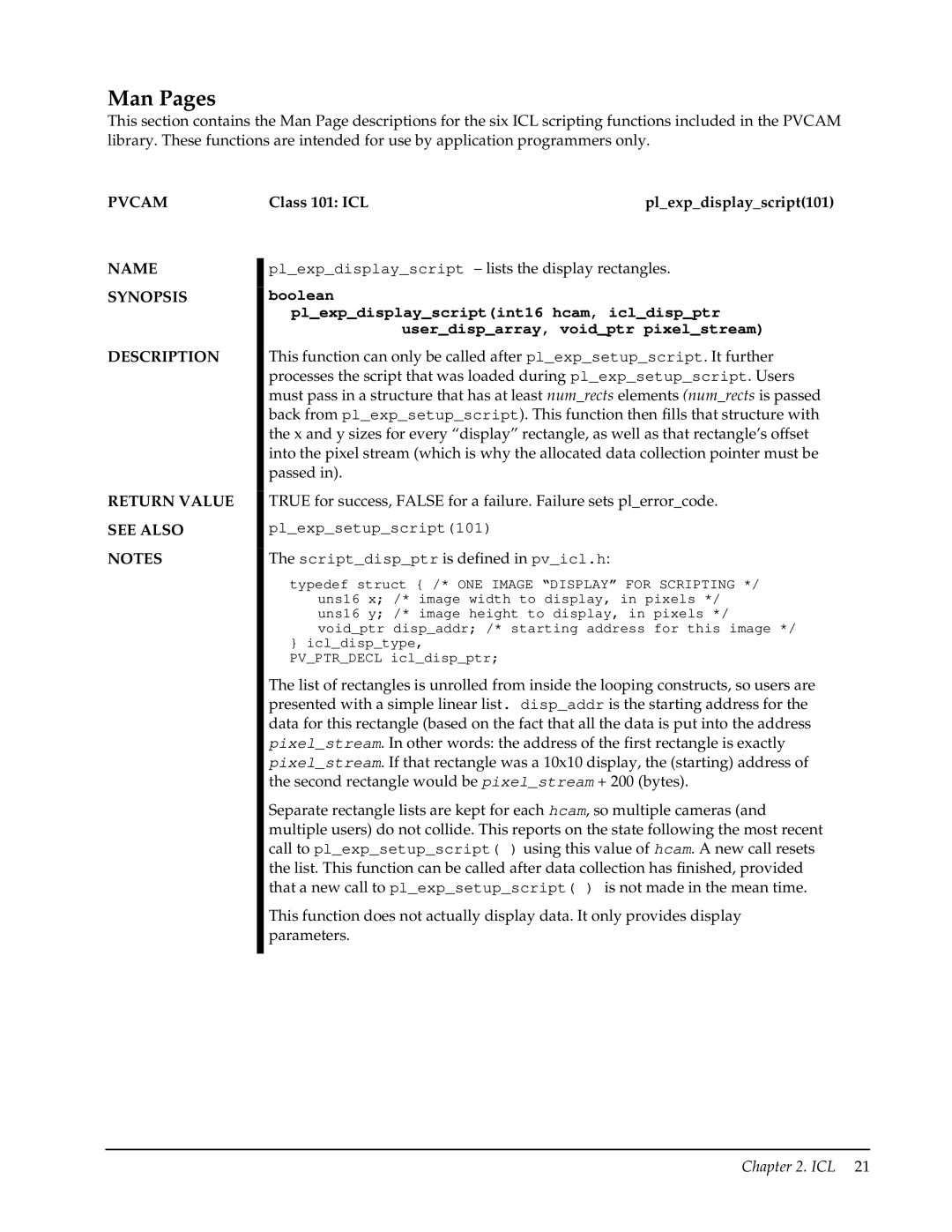
Man Pages
This section contains the Man Page descriptions for the six ICL scripting functions included in the PVCAM library. These functions are intended for use by application programmers only.
PVCAM
NAME
SYNOPSIS
DESCRIPTION
RETURN VALUE SEE ALSO NOTES
Class 101: ICL | pl_exp_display_script(101) |
![]() pl_exp_display_script – lists the display rectangles.
pl_exp_display_script – lists the display rectangles.
boolean
pl_exp_display_script(int16 hcam, icl_disp_ptr user_disp_array, void_ptr pixel_stream)
This function can only be called after pl_exp_setup_script. It further processes the script that was loaded during pl_exp_setup_script. Users must pass in a structure that has at least num_rects elements (num_rects is passed back from pl_exp_setup_script). This function then fills that structure with the x and y sizes for every “display” rectangle, as well as that rectangle’s offset into the pixel stream (which is why the allocated data collection pointer must be passed in).
TRUE for success, FALSE for a failure. Failure sets pl_error_code.
pl_exp_setup_script(101)
The script_disp_ptr is defined in pv_icl.h:
typedef struct { /* ONE IMAGE “DISPLAY” FOR SCRIPTING */ uns16 x; /* image width to display, in pixels */ uns16 y; /* image height to display, in pixels */ void_ptr disp_addr; /* starting address for this image */
} icl_disp_type,
PV_PTR_DECL icl_disp_ptr;
The list of rectangles is unrolled from inside the looping constructs, so users are presented with a simple linear list. disp_addr is the starting address for the data for this rectangle (based on the fact that all the data is put into the address pixel_stream. In other words: the address of the first rectangle is exactly pixel_stream. If that rectangle was a 10x10 display, the (starting) address of the second rectangle would be pixel_stream + 200 (bytes).
Separate rectangle lists are kept for each hcam, so multiple cameras (and multiple users) do not collide. This reports on the state following the most recent call to pl_exp_setup_script( ) using this value of hcam. A new call resets the list. This function can be called after data collection has finished, provided that a new call to pl_exp_setup_script( ) is not made in the mean time.
This function does not actually display data. It only provides display parameters.
